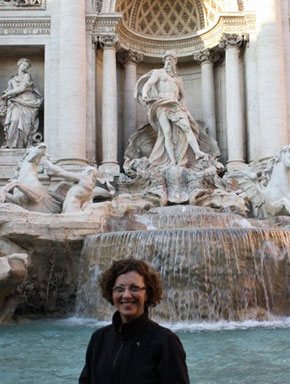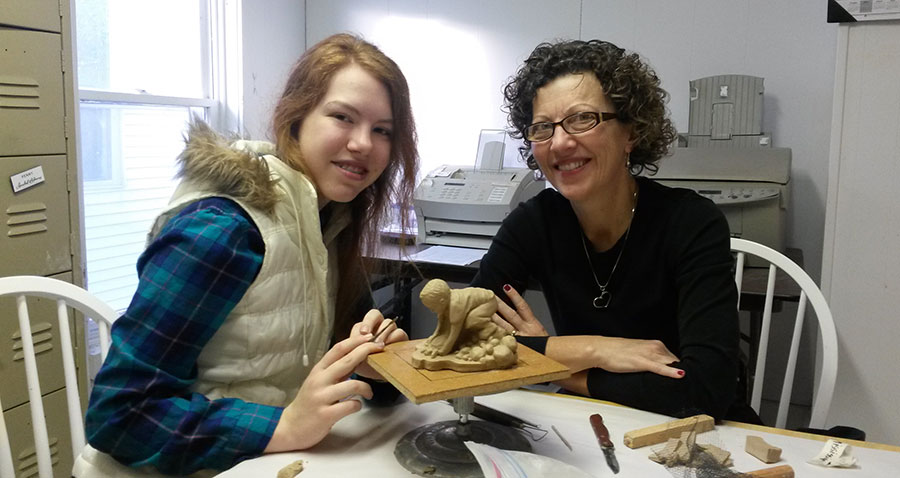Building the
Isabel Bloom Family
The new owners of Isabel Bloom Ltd. wanted to ensure that Isabel's sculpture would be available for future generations to purchase and enjoy. Bernadette Murphy, from Moline, Illinois, and Barbara VanVooren, from Davenport, would manage the East Village studio including the production of the sculptures, while Patsy Emmer and Sally Schell would open a shop in Edina, Minnesota to be supplied with sculptures from Davenport.
Three additional workers were hired, including Donna Liston (now Donna Young), who would eventually become the solo designer for Isabel Bloom Ltd. By increasing the number of employees and managers in the studio, the company accomplished their goal of having more sculptures in stock. Previously the studio had taken orders for large sculptures that often took months, and in the case of the Hilda fountain, over a year to complete.
The owner-managers took a "hands-on" approach, carefully selecting and working alongside the artisans, building a family atmosphere within the company. Each day, the artisans would work as needed in all areas: making molds, casting, finishing and coating the sculptures, as well as helping in the salesroom. The owners and senior employees worked to fine-tune Isabel's techniques with more recent advances in the process.
Finishing methods were modified to establish a more consistent appearance. Sculptures were still available in either the green/blue or terra cotta color, although the terra cotta color had evolved from Isabel's orange tint to a light rose shade. While the artisans could be creative in the placement and color of stones, by 1990 tiles were no longer used and glass eyes were limited to those with a light blue color. Carefully matching stones for eyes remained an important aspect of the finishing process.
Bernadette and Barbara also started a number of events to recognize the staff, such as monthly birthday parties. The largest celebration was always reserved for February 20th, Isabel's birthday, when a party would be held for her in the studio. Isabel enjoyed speaking with the artisans about their own artwork and encouraging them to show her their drawings, paintings, sculpture or jewelry. Isabel's occasional presence in the studio invigorated this group of dedicated people who were continuing the unique business that she had started.
Focusing on growth, the three business owners, Hunt Harris, Tom Carter and Jeff Gilfillan invested in the company by expanding its production and sales capabilities. In an effort to lower production costs in 2006, the decision was made to outsource production to China. In response to customer reaction, ownership rescinded the decision, producing only a small percentage of the line overseas to be sold to gift shops outside of the Quad City area.
In 2010, the National Gift Line, produced overseas in cast stone resin and sold throughout the country, was discontinued.
Isabel's Relationship
with Isabel Bloom Ltd.
Selling the business that she began in her basement was a difficult decision for Isabel. She had succeeded in creating a distinct niche for herself and her artwork. But she also recognized that the 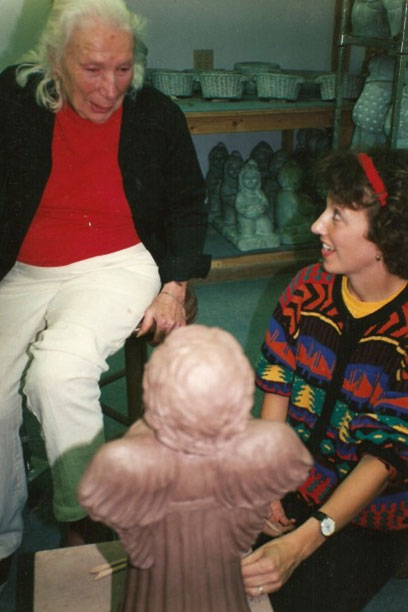 business aspect of the Isabel Bloom studio needed full-time attention. She told Quad City Times reporter Julie Jenson that after the sale was completed, "We celebrated with champagne. I'm no bookkeeper or accountant and now I'm free to do what I want to do. I have a lot of ideas I want to start working on."
business aspect of the Isabel Bloom studio needed full-time attention. She told Quad City Times reporter Julie Jenson that after the sale was completed, "We celebrated with champagne. I'm no bookkeeper or accountant and now I'm free to do what I want to do. I have a lot of ideas I want to start working on."
Happy to get back to designing and working with clay, Isabel continued to create new sculptures for the company. Starting with the addition of the Baby Bunny, Wren, and Magpie in 1981, Isabel delivered new works each year for the next ten years. The release of new sculptures was often accompanied by promotional events. At these events customers could have an opportunity to meet and visit with Isabel, who would sign the first 100 sculptures personally.
John Bloom also occasionally sculpted new designs for Isabel Bloom Ltd., such as Sniff in 1983 and John's Rabbit in 1988. In addition, Bernadette and Barbara purchased many of the new direct concrete sculptures that Isabel created, including most of the harlequin series and some unique abstract works that she exhibited at the Davenport Museum of Art, the Clinton Art Association and Studio 15.
Donna Young, one of several young artisans at Isabel Bloom Ltd., was often sent to Isabel's home to pick up the new clay designs. Having both an art background and experience in all aspects of the reproduction processes, Donna was an ideal choice to work with Isabel.
As health problems, including open-heart surgery and Parkinson's disease, increasingly interrupted her work, Isabel would ask Donna to put the finishing touches on some of her clay models. "I know how difficult it is for an artist to turn over her unfinished work to someone else," said Donna. "Luckily, Isabel and I had a relationship of mutual trust and respect, which made it a little easier." Several of the sculptures that Isabel and Donna worked on together were Baby in a Basket, Boy Angel, Flower Angel, Doll Angel and Littlest Angel.
From assisting Isabel, Donna began sculpting her own designs. In 1986, she completed her first original design for Isabel Bloom Ltd., Angel Plaque with Harp. As the number of sculptures designed by Isabel decreased, Donna's participation grew. She would often bring her clay models to Isabel to critique. Two sculptures that Isabel assisted Donna in designing are Nesting Birds Wreath (1993) and Garden Angel (1994). In 1995, Donna Young became the sole designer of Isabel Bloom Ltd.
Customers & Community:
Inspiration for New Sculptures
Isabel continued to sculpt from memory and observation, inspired by ideas from friends, customers and charitable organizations. She often responded to requests for specific subjects such as Lion, designed for the Lion's Club in 1987. The requests sometimes amused her as when she learned several people were interested in adding an Isabel Bloom pig to their collections.
The owners of Isabel Bloom Ltd. initiated the idea of sculpture series. In 1987 they introduced a series of Christmas Angels, which today is one of the company's most eagerly anticipated annual additions. The popular heart and egg series were both introduced in 1992, with Donna Young as the designer.
The company continued Isabel's practice of creating new designs for specific events, and donating (or selling at a reduced price) a specific number of sculptures to charity. The bottom of these sculptures, signed with the initials of the organization or event, identify them as being part of a charity edition. One of these special sculptures was Symphony Girl, which benefited the Quad City Symphony Orchestra and commemorated its 75th Anniversary in 1989. That same year Isabel designed a wall plaque, depicting St. Luke the patron saint of physicians and surgeons, to benefit St. Luke's Hospital in Davenport where she had undergone open-heart surgery in 1987.
In 1992, Donna Young began designing individual charity sculptures, including the Davenport House Plaque to benefit the Colonel Davenport House Foundation of Rock Island, Illinois and the Swing Plaques to benefit the Child Abuse Council of Moline, Illinois. Additional charity sculptures were designed to benefit organizations with which Isabel Bloom Ltd. had long-term relationships. This included several series of sculptures to benefit Quad City Arts through it Festival of Trees and another series of sculptures to benefit the Susan G. Komen Breast Cancer Foundation's local "Race for the Cure."
The Legacy
of Isabel Bloom
Realizing the need to expand facilities to keep up with the demand, the owners decided it was time to find investors that could take the company into the new millennium. Advancing the sculpture business would require a great deal of business refinement and expertise. In August of 1995, three former executives of Star Forms Inc., a computer paper company based in Bettendorf Iowa purchased Isabel Bloom Ltd. Tom Carter, Jeff Gilfillan and Hunt Harris formed a partnership, bringing with them years of experience in administration, sales, marketing and systems analysis. The resulting company was known as Isabel Bloom LLC (Limited Liability Company).
Continuing the legacy of Isabel Bloom is as important as anything we do at Isabel Bloom. "There are many factors involved for us, for our employees and for our customers that are tied to the traditions and heritage of Isabel Bloom and to tamper with them would be a kind of sacrilege," he said. "We would like to enhance, not change them."
The finishing process that Isabel originated remains the hallmark of the sculpture line, with each piece individually handcrafted by skilled artisans. The hospitality of the staff mirrors the personal relationships that Isabel formed with her customers. The family culture of the company is enhanced by an open relationship between employees and management and increased opportunities for staff to grow professionally within the company.
Room to Grow:
Harborview
The practical goals of Isabel Bloom were to relocate the production departments of the company to a larger facility and to expand and update the existing studios. In 1996, casting, finishing, coating, shipping and the business offices were moved to a 19,000 square foot space in the Harborview building in Davenport, one mile west of the East Village store. The mold-making department remained in the East Village studio. Molds were transported to Harborview for the casting and finishing processes. The completed sculptures were then shipped directly to customers or transported to the sales studios.
A major challenge for the new company was to have an adequate amount of stock available in the studios for immediate sale. Isabel's practice of taking orders in a spiral notebook was no longer suitable. Isabel Bloom Ltd. had attempted to keep a supply of sculptures in stock, by using a blackboard to keep track of weekly orders. Yet the demand had outgrown the ability of the company to supply their market.
To meet this challenge Isabel Bloom made increased production a top priority. The larger space at Harborview allowed for the hiring and training of additional artisans. Between 1995 and 2001 the number of employees increased from 80 to 180. The production area encompassed some 60,000 square feet. In addition, the expanded casting area provided for the use of more molds, thereby increasing the number of sculptures produced.
Remodeling & Relocating:
The Studios
The studio showroom in the Olde Town neighborhood of Moline was remodeled in the spring of 1996. The appearance of the studios, which originated with Isabel's arrangement of the sculptures in a rustic setting, was replaced by a country style that featured the sculptures in home settings. The placement of a number of John Bloom's lithographs and paintings complemented the décor. Isabel's studio in the East Village was also remodeled and the showroom area was extended to five times its original size. The company's visual display coordinator would change the displays seasonally in all of the Isabel Bloom studios.
The success of the Quad Cities stores encouraged the Isabel Bloom owners to consider additional studios. One was opened in 1996 in the Chicago suburb of Wilmette, Illinois and later relocated to the Riverwalk District of Naperville. In 1998 a studio was also opened in the Valley Junction area of West Des Moines.
To maintain a visual presence of Isabel Bloom in all its studios, the company financed a limited edition bronze casting of the clay self-portrait that Isabel had cast in plaster in the 1950s. Five sculptures were cast, one was given to Isabel and the others are on display, one in each of the studios.
In 1999, Isabel Bloom relocated their Moline studio to the John Deere Commons. A former factory building, the studio's larger showroom, more accessible location and convenient parking enhance the customer's shopping experience. The studio is a showplace, with a large salesroom filled with the sculptures, antiques and seasonal displays that emphasize Isabel's designs, as well as the sculptures of Donna Young.
"Bloomers" – The Employees
The working atmosphere at Isabel Bloom is open, casual, friendly, personable, comfortable and respectful. "All employees regardless of their level of responsibility are encouraged to share their ideas and concerns." Bloomers (as they refer to themselves) tend to stay with the company for many years. A commitment to promoting from within and providing opportunities for professional growth is evident in the number of department heads and managers who started out in positions requiring much less responsibility. The knowledge and experience of these longstanding employees contribute to the current success of the business.
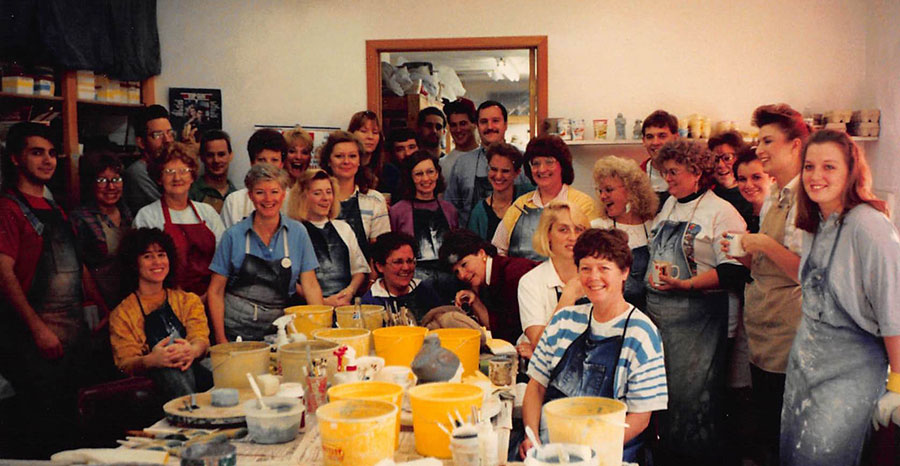
While Isabel's basic processes of "casting," "greening", "whiting" and "coating" remain virtually the same; many innovations have occurred through interaction between individual employees. In 1996, master mold maker Greg Gsell developed a process to make black eyes from a porcelain slip that is fired in handmade molds in the kiln. The uniform shape and color of the porcelain eyes provide a consistent appearance, while retaining the natural look of stones. Also in 1996, both greening and whiting finishers began to sign each sculpture with their initials. This practice of initialing pieces emphasizes the fact that each sculpture is handmade by individual artisans.
The employees' appreciation for Isabel Bloom sculptures goes beyond artistry and dedication in the workplace. Many Bloomers are also loyal customers of the company, buying sculptures for gifts, as well as their own personal collections. This unique tie to the product makes employee-customers a valuable source of opinions and suggestions.
The Making of an
Isabel Bloom Sculpture
Although Isabel Bloom sculptures are made using many of the same processes that Isabel developed, some changes have been made to improve the materials and to ensure a consistent quality of finish. From the beginning of casting through the completion of resin coating, each Isabel Bloom sculpture takes four to five days to complete. Trained artisans, who take pride in continuing the heritage of Isabel Bloom, shepherd each piece through the process that has eight basic steps.
The first is the design phase. Donna chooses a subject, sometimes drawing a sketch or taking a photo of a model. She sculpts the model in clay, paying close attention to surface texture and proportion. After approval of the model, Donna takes her clay to the mold-maker.
Brushing many thin layers of latex over the clay model, a process that takes three or four days, forms the first mold. This latex mold preserves every detail of the design, while being flexible and strong enough to withstand many pourings of concrete. When the latex is set, plaster is carefully hand-applied over the latex in sections, thus forming a firm support for the detailed inner mold. After the plaster has cured, the mold is separated into sections and the clay original is removed. A plaster replica is cast in this mold and inspected for defects. Then the latex and plaster parts are given corresponding numbers and this becomes the "master mold." Additional molds are made from the plaster replica.
The completed molds are transported to the casting room where a mixture of cement, sand, water, rock and pigment is poured into the mold. The recipe varies according to the size of the sculptures being cast. The casters use vibrating tables, hand prodding and mold rotation to eliminate air bubbles and assure that the concrete mixture settles into every detail of the piece.
Once they are set, the concrete casts are removed by separating the sections of the plaster molds and stripping off the latex molds. The casters then sand off rough edges. Small defects are fixed before finishing, and any piece with a large defect is destroyed. The remaining smaller sculptures are divided up among the finishers, while the large sculptures continue to cure.
During the brown stage, river stones and tiles are applied to those sculptures that require them, this includes Large Owl and Quail. Finishers, chosen for their creativity and artistry, apply a grout mixture (cement, sand, vermiculite, pigment and water) to form a thick layer into which the stones or tiles are pressed. The sculptures then sit overnight to cure.
The next step is the greening or "rosing" process. Each artisan mixes cement and pigment (color) according to a specified recipe. While the recipe is the same, the color can differ depending on the preference of the finisher. To bring out the rich undertones of the base sculpture, which has been water soaked, the colored cement is hand-applied and then carefully rubbed off in specific areas. This green-tinted finishing provides the distinctive appearance of weathered bronze. Green finishers are encouraged to bring out the strong bronze highlights reminiscent of the sculptures that Isabel finished.
As each sculpture is completed, the finisher initials the bottom. Then the sculptures are sealed in plastic bags to cure overnight.
The next day, a mixture of fine white cement and water is applied to the piece. The white finishers work carefully, using sponges to leave fine white lines in the detail of the design, while lightly frosting the rest of the sculpture. During this process, Mississippi River stones and porcelain or glass eyes are placed in the appropriate indentations. The artisans are free to be creative with the placement and selection of stones, as no two pieces are ever quite alike. When the whiting process is completed, the finisher initials the bottom of the sculpture next to the greener's initials.
Finally, a clear resin is hand-applied to each sculpture, providing a slight sheen that adds reflective qualities, as well as surface protection. When dry, the sculpture is signed with the Isabel Bloom ® signature by artisans trained to replicate Isabel's handwriting. If the date of introduction of the sculpture occurred after 1985, the year of introduction followed by the copyright symbol © is also written on the bottom of the sculpture. Sculptures designed by John Bloom are also signed with a facsimile of his signature.
Community of Customers
Isabel Bloom sculptures are appropriate for a wide array of special occasions including birthdays, weddings, and anniversaries. They are often given to express friendship, support, sorrow, and love. Many individual sculpture collections are started by a gift from a friend or loved one. Collectors' range from children to great-grandparents and in many families, giving and receiving Isabel Bloom sculptures has become a tradition spanning generations.
Customers often take sculptures on trips as gifts representative of the Quad Cities or our Midwest region. Likewise, many tourists to Iowa want to purchase a unique, locally made keepsake. "We are lucky to be an interwoven part of the local community and culture," said Tom Carter. "It is not just important for us to support the local community; it is vital for our continued success."
To reinforce this concept, the company has introduced several sculptures that depict Quad Cities landmarks. The limited edition Eagle Plaque pictured the Centennial Bridge, over the Mississippi River, and the background of the Summer Days Plaque shows the I-74 Bridge connecting Moline, Illinois and Bettendorf, Iowa.
Keeping in touch
with the customers
Isabel Bloom is a prominent and well-known company. As a Quad Cities based business for over 50 years, the distinctive finish of the sculptures and the unique navy blue bags with their ribbons are easily recognizable.
While the remodeled stores and charity participation also increases public exposure, customer "word of mouth" accounts for much of the interest that the company has attracted. "Our loyal customers are proud of their association with our product and company and feel a sense of community with us," said Jeff Gilfillan.
The company communicates with its customers in a variety of ways including through their emails and seasonal flyers. Due to rising costs of printing and mailing, the catalog which over the years expanded from its original 12 page black and white pamphlet, introduced by Isabel Bloom Ltd., to over 40 pages of four-color photographs, is no longer produced.
Since 1999 the entire line of sculptures can be viewed and purchased at www.ibloom.com.
Isabel Bloom's marketing plan includes advertising, which often focuses on newly released sculptures. Local media promotions are also part of the plan and the company sponsors annual "Preview Parties" at all of their studio showrooms. These parties allow customers to meet Donna Young, preview new designs, and have their purchases signed by Donna.
A toll-free customer service number was established in 1998. Calls are received in the Harborview building, where the finishing and shipping departments are located, ensuring the prompt filling of orders. The website, the toll free number, flyer mailings and email communications have made it more convenient for customers to purchase sculptures from any location and at any time.
The End of An Era
Isabel Bloom passed away in her home, near her husband, John, on Tuesday, May 1, 2001. She had battled Parkinson's disease for decades; it had confined her to a wheelchair and gradually limited the mobility in her hands. Her spirit, mind and artist's eye were present till the end as she continued to relate stories and watch spring come into bloom around her.
The legacy that Isabel Bloom leaves is more than just her sculptures; it is seeing the beautiful details of the world and wanting to share that vision. It is accomplishing a goal, no matter what the obstacles; it is not even seeing the obstacles. It is plunging into new experiences without fear and adapting to the best of your ability. It is inspiring and touching people with kindness and integrity.
Tom Carter, Jeff Gilfillan and Hunt Harris, the owners of Isabel Bloom spoke for all of us when they relayed the news of Isabel's passing to their employees.
It is somewhat symbolic that Isabel left us on the first day of May. May Day is a time of rebirth. The warmth of this sunny day uplifts our hearts. Isabel's designs remind us of nature, children, flowers and all the creatures of Spring. While we are saddened by the loss of this great lady, all that is good around us reminds us of her art and her special character. The joy that Isabel saw around her will forever be with all who own her sculptures. Isabel led a full and varied life. Her creativity was our inspiration. While she has left us in body, she will always remain with us in spirit. The community will greatly miss this unique lady. As members of the company bearing her name, let us carry on her legacy of creativity and service. Let us all give thanks for this wonderful woman who touched our lives in so many ways.
"Grasshopper,"
The Beauty of Small Things
Donna Young has created a special sculpture, "Grasshopper," as a tribute to Isabel Bloom's ability to see and appreciate the beauty of small things, like the children and animals that inspired many of her designs. "Grasshopper," is mounted on the same Anamosa, Iowa limestone, which Isabel used to begin her sculpturing career at Grant Wood's Stone City Art Colony.
Isabel was an artist and a teacher who taught us to discover simple beauty in all things. From the chubby, round shape of a child playing peek-a-boo to the elegance and grace of the grasshopper which one day landed on her hand, Isabel taught us, "Seek beauty in the ordinary. Never take any small thing for granted."
Inspired throughout her artistic life by "watching the children", it is fitting that all proceeds from the sale of "Grasshopper", be used to enhance visual arts education within the school systems of Scott County, IA and Rock Island County, IL. The Isabel Bloom Art Education Fund, founded by Isabel Bloom, is administered by the Community Foundation of the Great River Bend and will provide annual grants to support visual arts programming that is outside traditional funding sources available to the schools. Tax-deductible contributions can also be made directly to the fund.
Focus On Growth
In 2002, Isabel Bloom opened its production facility to the public, by offering free tours, which offered guests the opportunity to interact with the artisans as they demonstrate each step of the handcrafted process. In 2003 the first "tour sculpture" was introduced. "Isabel Rose", named in honor of our founder, was available in a special "multi-color" finish to tour guests only, and only for one year. This practice of introducing a limited edition tour piece would continue for many years.
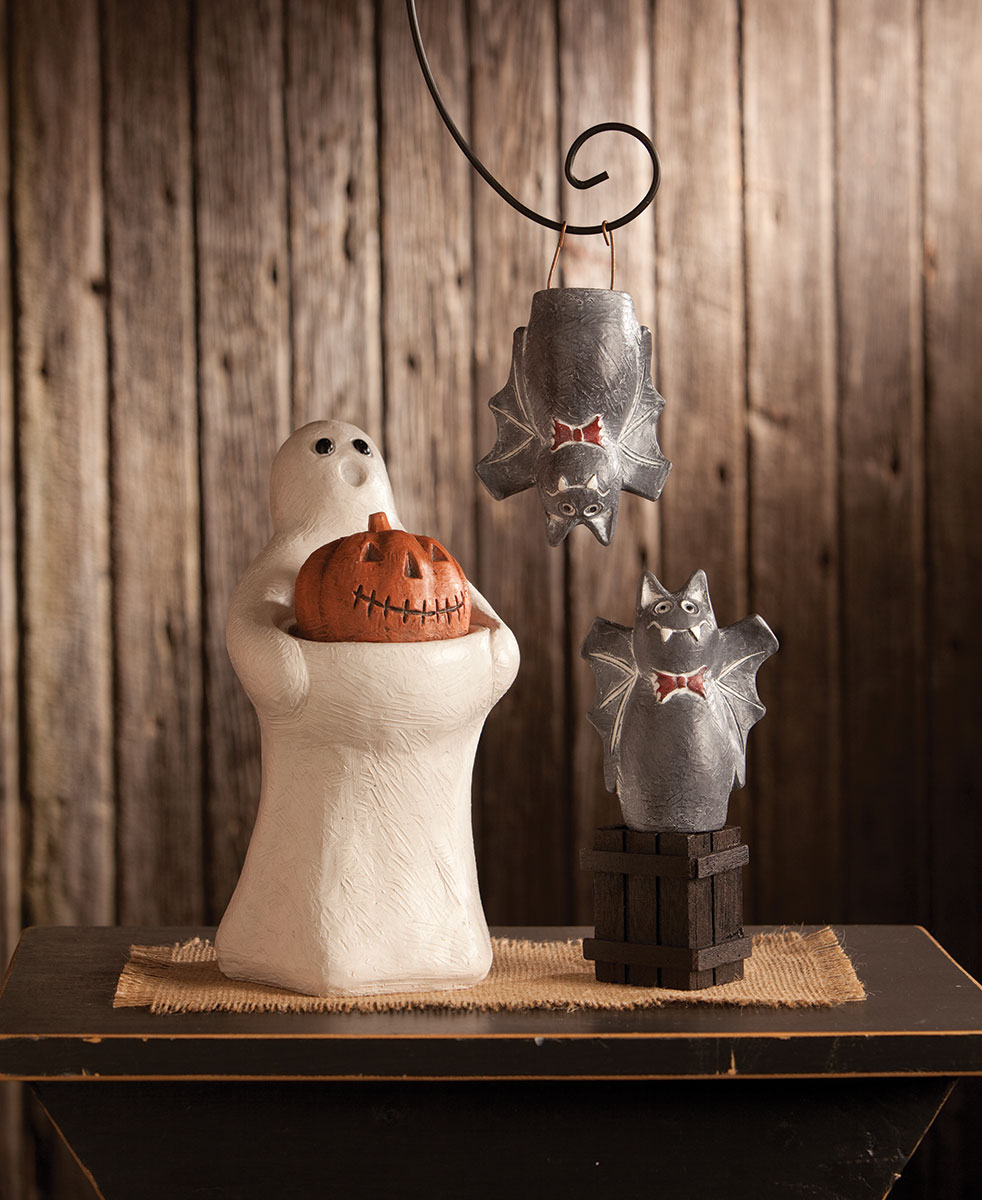 Halloween is a favorite holiday of Donna's, and in 2005 the company began a new Halloween series, with the introduction of "Boo", a simple ghost, holding a small tea light. This new design prompted some experimenting with casting in different colors, such as white, as well as applying different finishes on top, such as verdigris.
Halloween is a favorite holiday of Donna's, and in 2005 the company began a new Halloween series, with the introduction of "Boo", a simple ghost, holding a small tea light. This new design prompted some experimenting with casting in different colors, such as white, as well as applying different finishes on top, such as verdigris.
In order to reduce the cost of creating an Isabel Bloom, the weathered bronze finish was eliminated, and sculptures were poured with a green concrete mix and then finished with white, thus eliminating a step in the finishing process. Many customers missed the weathered bronze patina, and it was brought back in 2009. Some sculptures are still finished in green.
Continuing to focus on growth, the three business owners, Hunt Harris, Tom Carter and Jeff Gilfillan, in an effort to lower production costs in 2006, decided to outsource production to China. In response to negative customer reaction, ownership rescinded the decision, producing only a small percentage of the line overseas to be sold to gift shops outside of the Quad City area.

Also this same year, a "Story Card" was developed for each sculpture in the line. These cards include the name of the sculpture, and a short, inspiration or poem, often written by Isabel Bloom employees themselves. These story cards add even more meaning to an already meaningful gift.
In 2007, after 10 years in the community, the tough decision was made to close the showroom in Naperville, Illinois.
Another new finish was developed in 2009, called Garden Moss Rose. The intent was to create a look of "aged" sculpture. The cast sculpture is first dipped in a bath of diluted muratic acid to "etch" the surface. Then diluted exterior moss-green paint is applied using a spray bottle. A darker brown-colored paint is then drizzled over the top of this. The result is a very appealing finish unique to Isabel Bloom. These Garden Moss Rose sculptures do not receive the final clear coat, as the intent is for them to have a rough, rather than glossy appearance.
In 2010 the National Gift Line, produced overseas in cast stone resin and sold throughout the country, was discontinued.
Also in 2010, the front room of the East Village store was remodeled, creating a historical tribute to Isabel. Many original one-of-a-kind ceramic and direct cement sculptures of Isabel's were brought together, as well as old newspaper clippings chronicling Isabel's artistic career.
New Ownership
In 2011, Donna and 2 other long-time employees Cathy Nevins and Bill Barrett purchased the company from Hunt Harris. Isabel Bloom Inc was born. Under Cathy, Bill and Donna's leadership, Isabel Bloom's community involvement continues to strengthen in areas involving women, children and especially the arts. They are committed to keeping the integrity of the handcrafted sculptures as the 60 + year old company continues to thrive.
Growing & Supporting
Habitat for Humanity was added to the list of non-profit organizations Isabel Bloom supports, by creating the Habitat Pineapple. In 2011 alone, over $2,000 was raised for the Quad City Chapter of Habitat. (Isabel Bloom also supports the Des Moines chapter with dollars raised from all Pineapples sold through the Des Moines showroom.)
In 2014 a new showroom was opened in LeClaire, Iowa; a picturesque town just 20 miles from the Quad Cities, along the banks of the Mississippi River.
A year later, Isabel Bloom collaborated with American Picker's Mike Wolfe (who is from LeClaire, Iowa) to create a sculpture to bring awareness and support to "Operation Smile". Inspired by Mike's daughter, Charlie, who was born with a cleft lip and palette, the sculpture captures the innocence of childhood … while sharing the hope all parents have for their children's health and well-being. In December of 2015 a check of $10,000 was presented to Operation Smile.
Handcrafted Production & Retail Back Together Again
In the Fall of 2016 the opportunity for Isabel Bloom to bring its sales and production back together under one roof came about courtesy of the recent sale of the buildings at Harborview to local developer Joe Erenberger. Soon its retail showroom and mold-making will move one mile west to a more spacious location at 736 Federal Street (The Gordon-Van Tine Buildings formerly known as Harborview) in Davenport, where most of the company's handcrafted process already takes place.
"We have searched for several years to find a way to combine our sales and production, so when the buildings at Harborview were purchased by Joe Erenberger and his partners, the possibility of bringing retail to our production site opened up," Bill Barrett, Co-Owner or the company said.
Co-owner and sculptor Donna Young said the move returns the company to Isabel's original model.
"Isabel originally had the entire handcrafted process and retail under one roof," co-owner and sculptor Donna Young said. "We artisans worked alongside one another as we crafted molds and casted and finished sculptures. When the showroom floor got busy, we would clean off our hands and go help out. We are returning to that model by bringing our mold-makers - along with our retail space – back together. It will offer our customers a more intimate, dynamic and exciting Isabel Bloom shopping experience, much like when I first started working for Isabel Bloom over 30 years ago."
Extensive renovations to the newly renamed Gordon-Van Tine building at 736 Federal Street will accommodate the new Bloom retail and production space. They are expected to be completed by early October 2016.
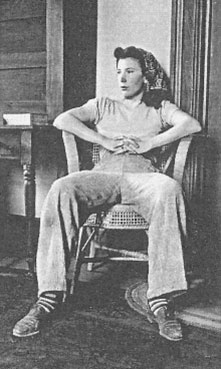
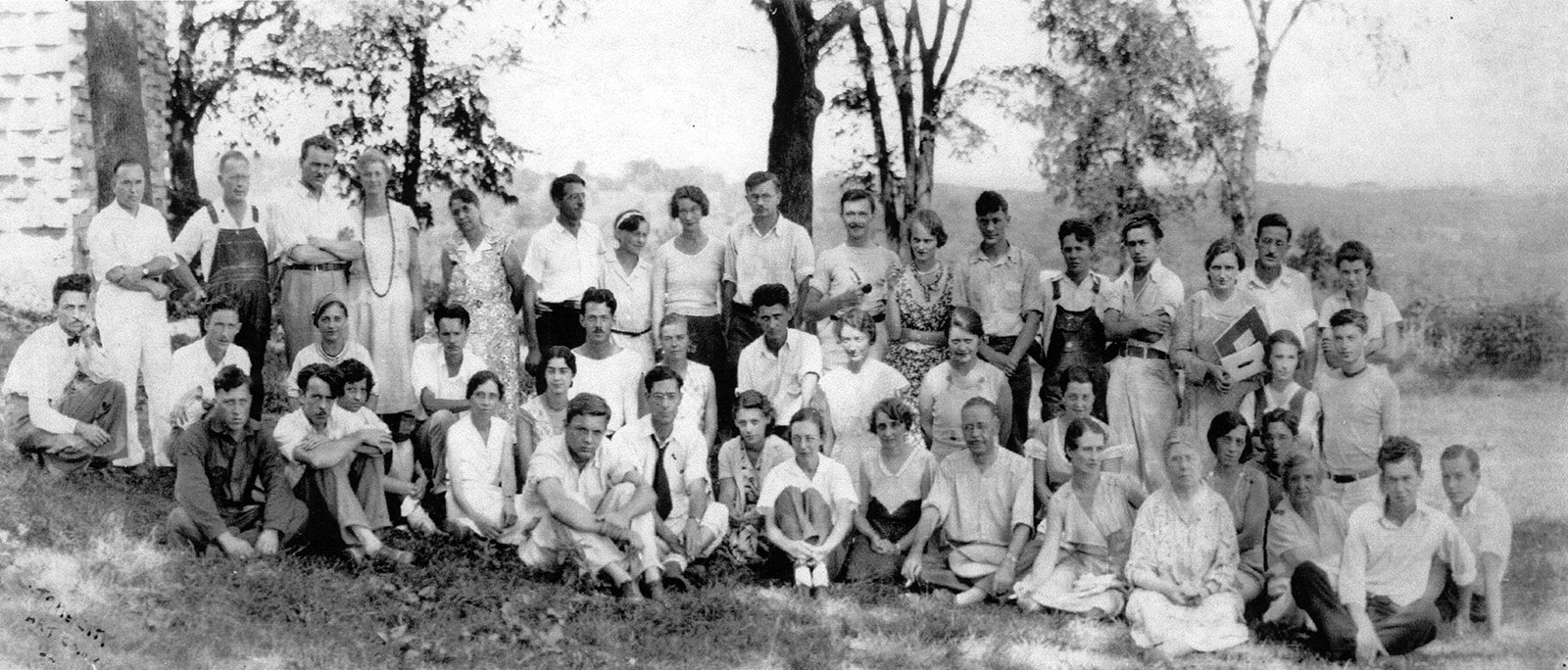
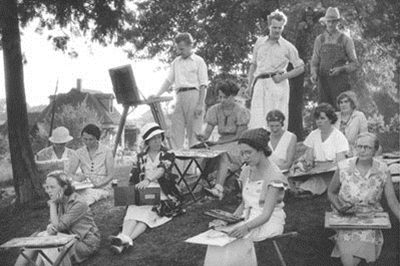
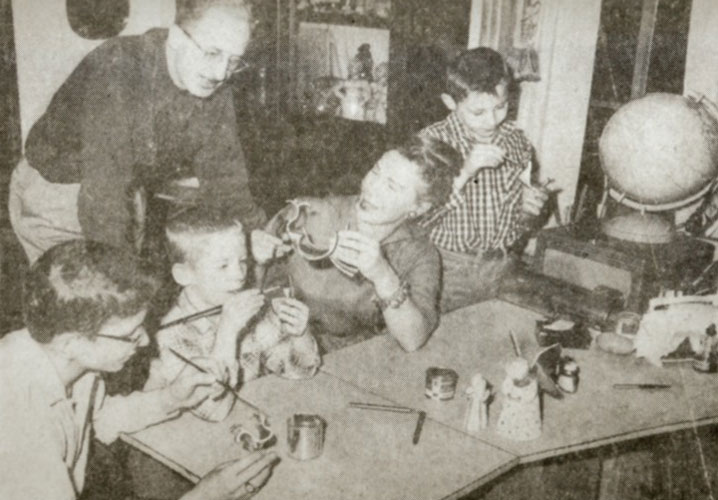
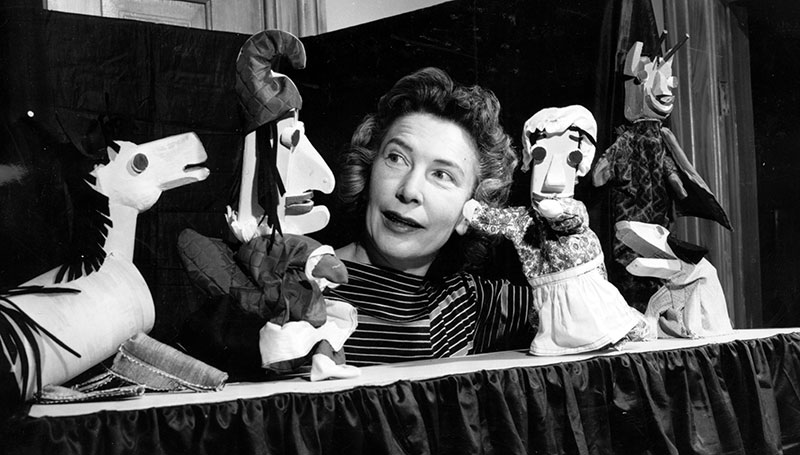
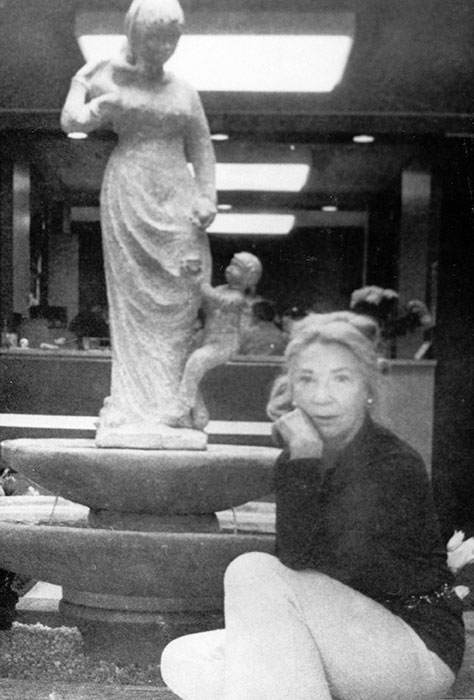
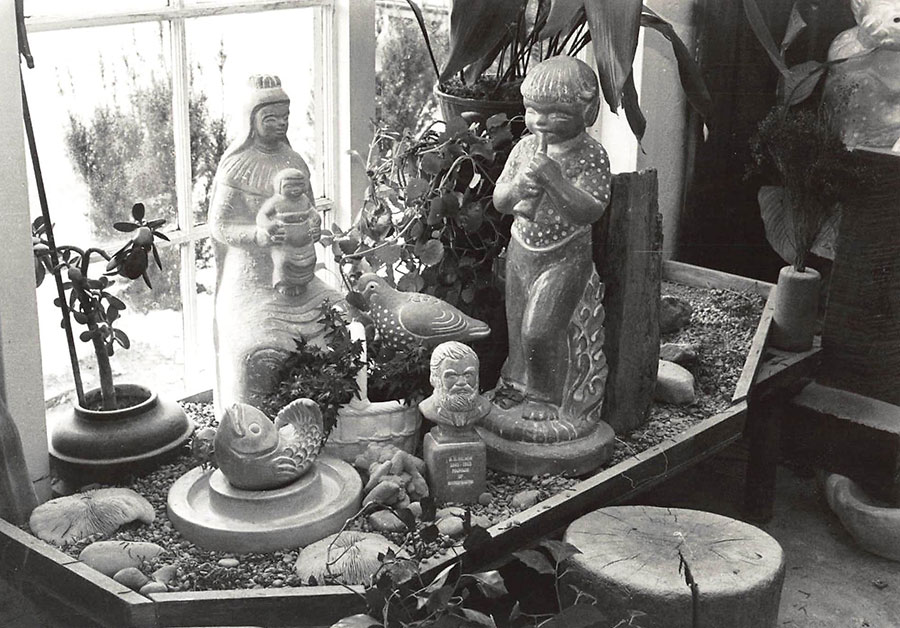
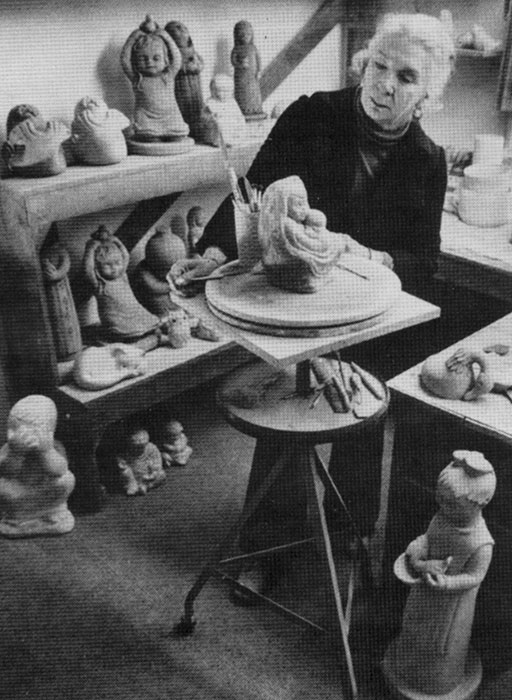
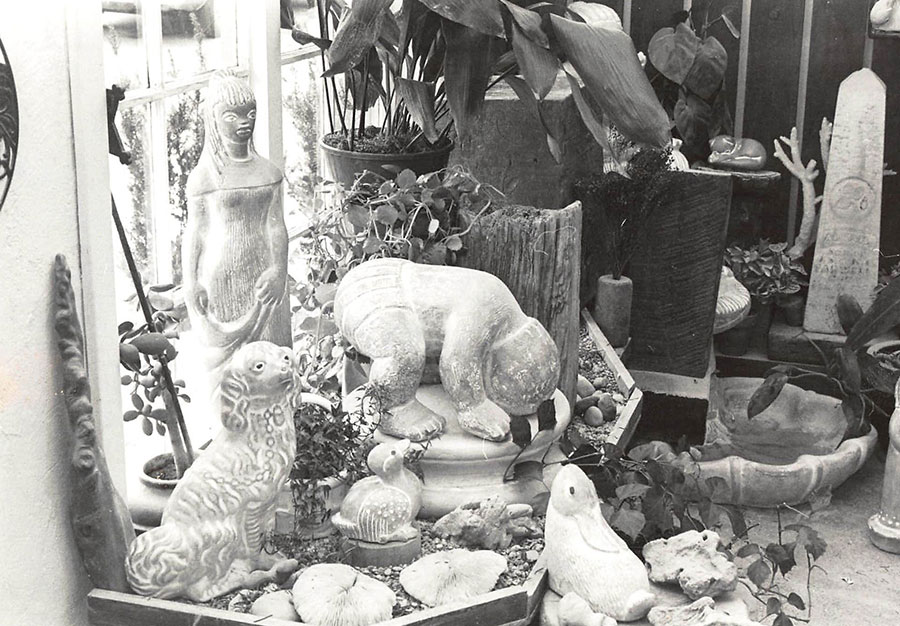
 business aspect of the Isabel Bloom studio needed full-time attention. She told Quad City Times reporter Julie Jenson that after the sale was completed, "We celebrated with champagne. I'm no bookkeeper or accountant and now I'm free to do what I want to do. I have a lot of ideas I want to start working on."
business aspect of the Isabel Bloom studio needed full-time attention. She told Quad City Times reporter Julie Jenson that after the sale was completed, "We celebrated with champagne. I'm no bookkeeper or accountant and now I'm free to do what I want to do. I have a lot of ideas I want to start working on."
 Halloween is a favorite holiday of Donna's, and in 2005 the company began a new Halloween series, with the introduction of "Boo", a simple ghost, holding a small tea light. This new design prompted some experimenting with casting in different colors, such as white, as well as applying different finishes on top, such as verdigris.
Halloween is a favorite holiday of Donna's, and in 2005 the company began a new Halloween series, with the introduction of "Boo", a simple ghost, holding a small tea light. This new design prompted some experimenting with casting in different colors, such as white, as well as applying different finishes on top, such as verdigris.
 It could be argued that her mother worked even harder as a registered nurse, coming home from work every night, preparing a home-cooked meal for her large, ravenous family.
It could be argued that her mother worked even harder as a registered nurse, coming home from work every night, preparing a home-cooked meal for her large, ravenous family. 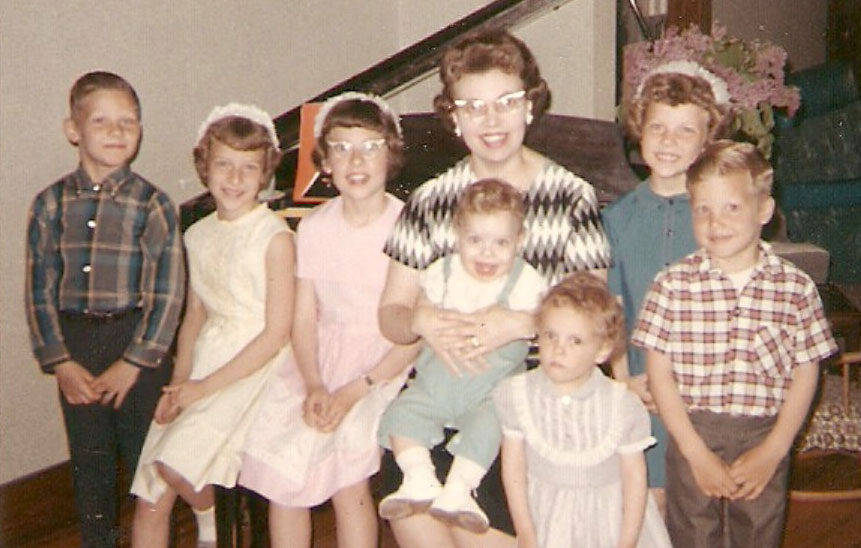
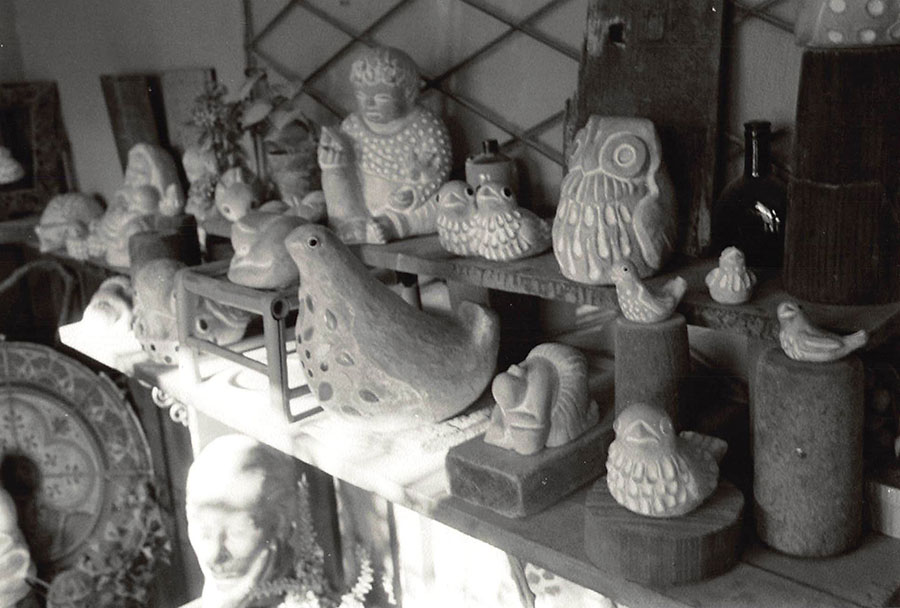 It was a tiny showroom, filled with simple, rounded concrete figures all in the same soft green hue, propped up on wooden boxes, river stones, drift wood and various interesting antiques. The place could have used a good dusting, she noticed, but the thing that really caught her eye, and gave her the feeling that she would really like working here, was the telephone (yes, back in the day of the land lines, and rotary dial, no less!). It sat in the far corner of the room, just before an open doorway. It was not unusual at all to have a phone in your showroom. What was unusual was that the phone was covered in caked-on cement, and maybe a little plaster. To Donna this spoke volumes about what went on here. She liked the idea of getting her hands dirty, and of working with the customers. The interview went well and she was hired.
It was a tiny showroom, filled with simple, rounded concrete figures all in the same soft green hue, propped up on wooden boxes, river stones, drift wood and various interesting antiques. The place could have used a good dusting, she noticed, but the thing that really caught her eye, and gave her the feeling that she would really like working here, was the telephone (yes, back in the day of the land lines, and rotary dial, no less!). It sat in the far corner of the room, just before an open doorway. It was not unusual at all to have a phone in your showroom. What was unusual was that the phone was covered in caked-on cement, and maybe a little plaster. To Donna this spoke volumes about what went on here. She liked the idea of getting her hands dirty, and of working with the customers. The interview went well and she was hired. 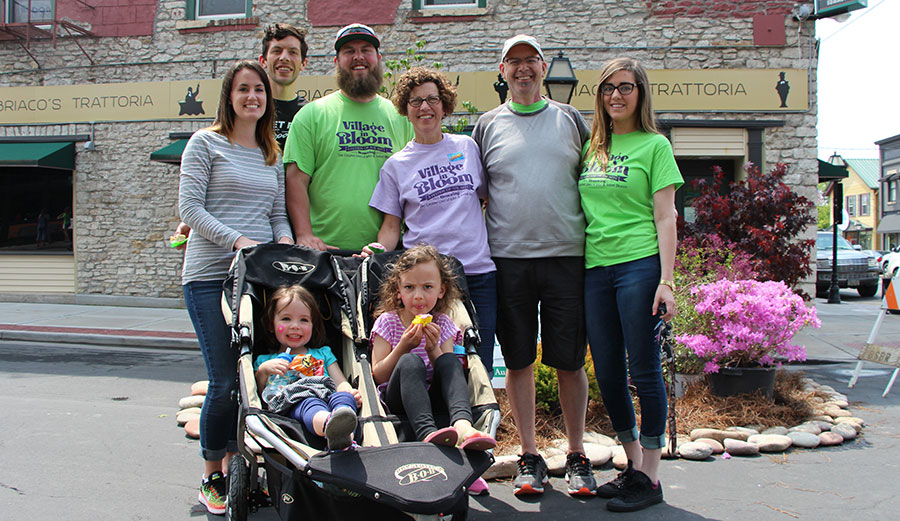
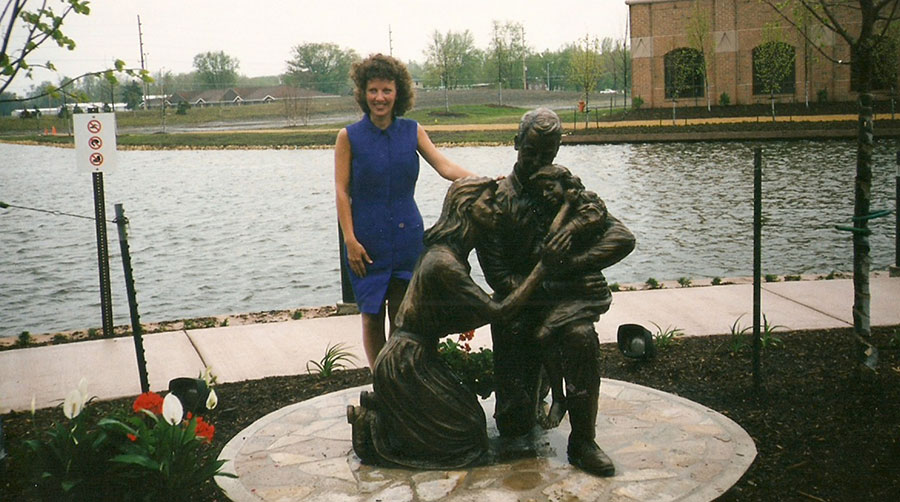
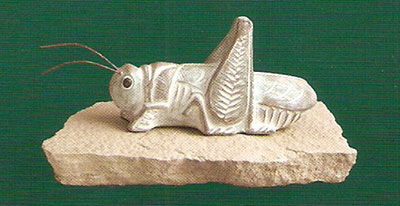 From the chubby, round shape of a child playing peek-a-boo to the elegance and grace of the grasshopper which one day landed on her hand, Isabel taught us to seek beauty in the ordinary and to never take any small thing for granted. Proceeds from the sale of this sculpture were used to establish the Isabel Bloom Art Education Fund, which provides extra financial support to visual arts education in primary and secondary schools in Scott and Rock Island Counties. Donna sits on the board at the Community Foundation of the Great River Bend for this fund.
From the chubby, round shape of a child playing peek-a-boo to the elegance and grace of the grasshopper which one day landed on her hand, Isabel taught us to seek beauty in the ordinary and to never take any small thing for granted. Proceeds from the sale of this sculpture were used to establish the Isabel Bloom Art Education Fund, which provides extra financial support to visual arts education in primary and secondary schools in Scott and Rock Island Counties. Donna sits on the board at the Community Foundation of the Great River Bend for this fund.